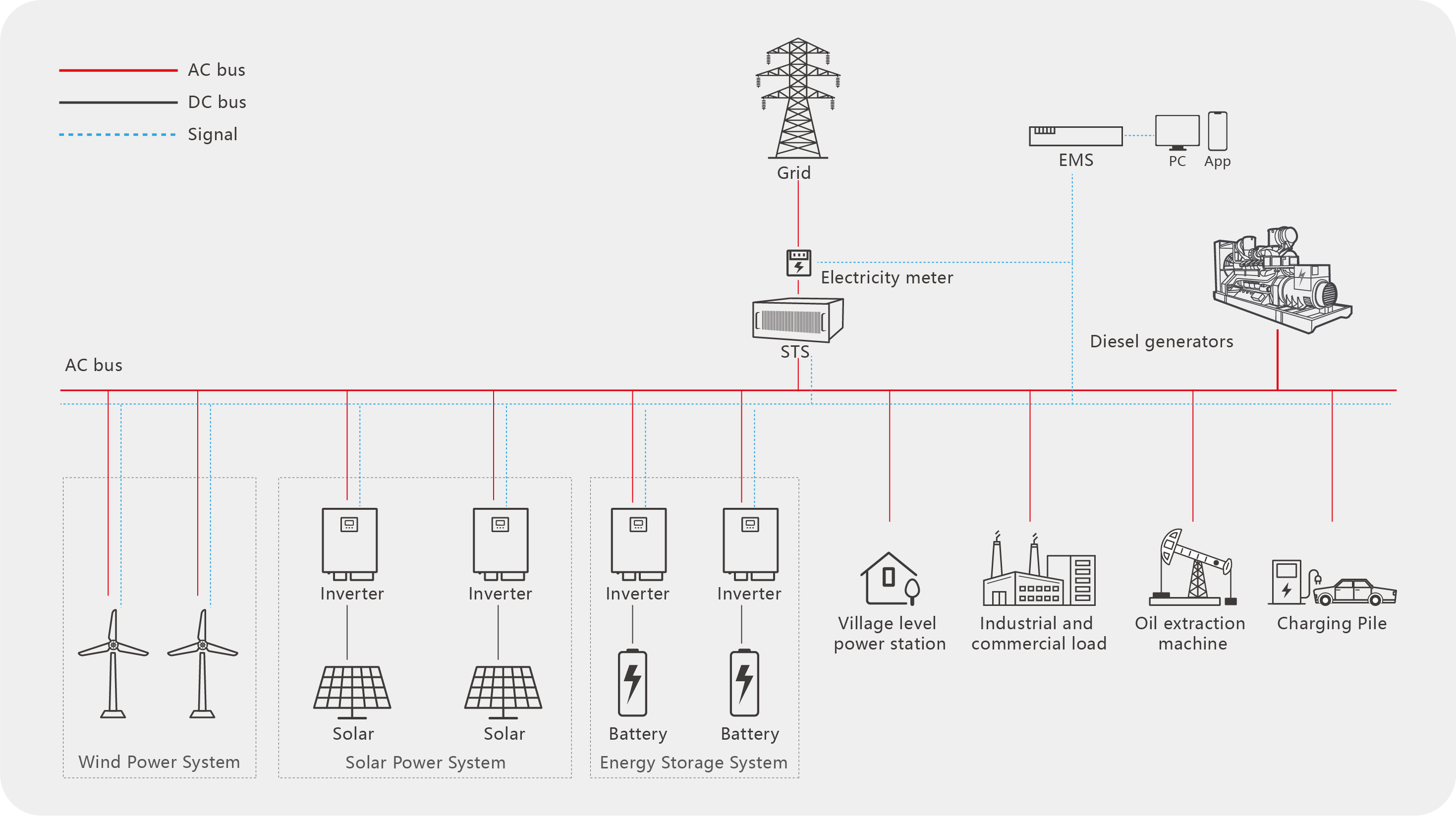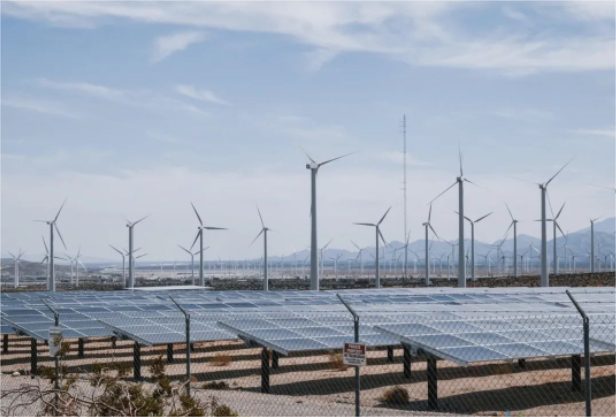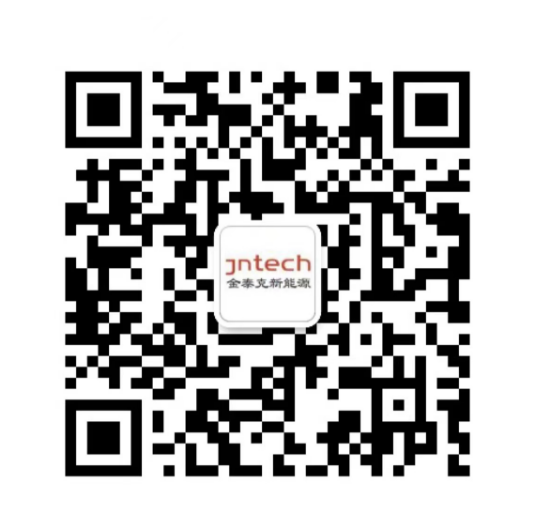 Tecnologías centrales de las microrredes
Tecnologías centrales de las microrredes
Sep 09, 2024
Las tecnologías clave de microrredes inteligentes incluyen principalmente lo siguiente:(I) Tecnología de generación de energía renovableEn la actualidad, las microrredes inteligentes se basan principalmente en una variedad de fuentes de energía renovables, y la entrada de energía es principalmente fotovoltaica, energía eólica, energía de hidrógeno, gas natural, biogás y otras tecnologías maduras de generación de energía.(I) Tecnologías clave de almacenamiento de energíaEl almacenamiento de energía es una parte indispensable de las microrredes. Puede desempeñar un papel en la reducción de picos y el llenado de valles en microrredes, mejorando en gran medida la eficiencia de utilización de la energía intermitente. Con el desarrollo continuo de la ciencia y la tecnología, el almacenamiento de energía actual incluye principalmente el almacenamiento de energía en baterías, el almacenamiento de energía en volante, el almacenamiento de energía magnético superconductor y el almacenamiento de energía en supercondensadores. La tecnología de almacenamiento de energía más madura es la batería de plomo-ácido, pero tiene el problema de una vida corta y una grave contaminación por plomo. En el futuro, la comercialización de baterías de grafeno de alto almacenamiento de energía, bajo costo y rendimiento de alta calidad traerá impulso a la industria del almacenamiento de energía. El costo actual de desarrollo de la tecnología de almacenamiento de energía es relativamente alto. Países de todo el mundo están trabajando en esta tecnología, pero todos tienen un objetivo común, que es lograr el objetivo de "bajo coste + alto almacenamiento de energía".(II) Tecnología de despacho de optimización de energía de microrredes inteligentesA diferencia del sistema de despacho de red eléctrica tradicional, el sistema de despacho de microrred inteligente pertenece a la tecnología de despacho de optimización complementaria horizontal de múltiples energías, que puede explorar y utilizar completamente la sustituibilidad complementaria directa de diferentes fuentes de energía, y no solo puede obtener la producción de calor. , electricidad y frío, pero también realiza el intercambio de energía luz/electricidad, calor/frío, viento/electricidad, corriente continua/alterna. La estratificación de varias fuentes de energía en los enlaces fuente-almacenamiento-carga realiza un despacho ordenado de optimización en cascada para lograr la mejor eficiencia de utilización de la energía.(III) Tecnología inteligente de control y protección de microrredesHay múltiples fuentes de energía y múltiples cargas en la microrred inteligente. Los cambios en las cargas y las fluctuaciones en las fuentes de energía deben ser regulados y controlados por el sistema de almacenamiento de energía o la red eléctrica externa. La regulación, conmutación y control de estas fuentes de energía se completa desde el centro de control de la microrred. Además de monitorear los parámetros de energía, el estado del interruptor, la calidad de la energía y los parámetros energéticos de cada nuevo sistema de generación de energía, sistema de almacenamiento de energía y carga, el centro de control de la microrred también necesita ahorrar energía y mejorar la calidad de la energía.
LEER MÁS

 Español
Español English
English Français
Français Deutsch
Deutsch Русский
Русский Italiano
Italiano Português
Português عربي
عربي 日语
日语 ไทย
ไทย





 IPv6 RED SOPORTADA
IPv6 RED SOPORTADA
